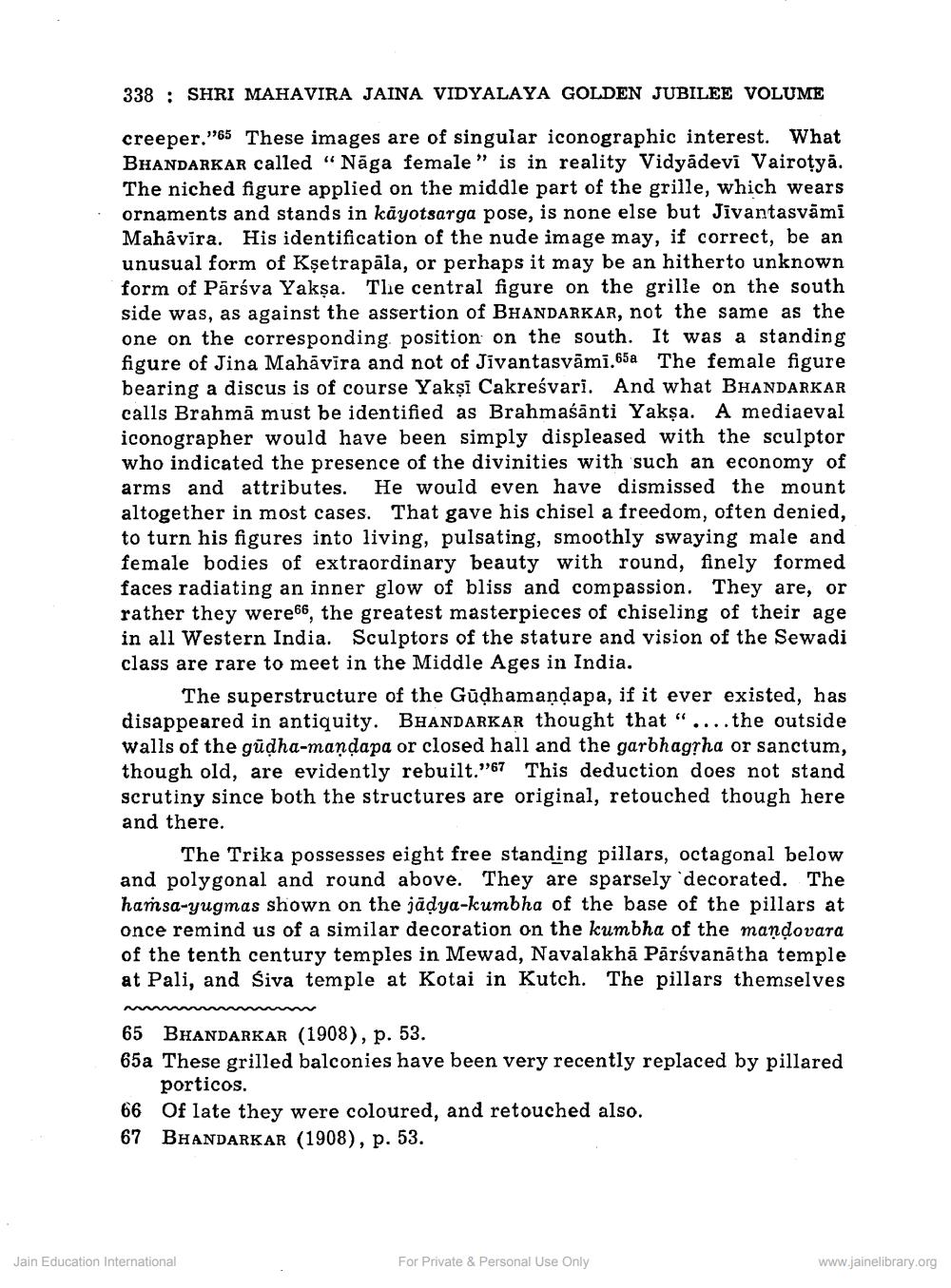________________ 338 : SHRI MAHAVIRA JAINA VIDYALAYA GOLDEN JUBILEE VOLUME creeper."65 These images are of singular iconographic interest. What BHANDARKAR called "Naga female" is in reality Vidyadevi Vairotya. The niched figure applied on the middle part of the grille, which wears ornaments and stands in kayotsarga pose, is none else but Jivantasvami Mahavira. His identification of the nude image may, if correct, be an unusual form of Ksetrapala, or perhaps it may be an hitherto unknown form of Parsva Yaksa. Tlie central figure on the grille on the south side was, as against the assertion of BHANDARKAR, not the same as the one on the corresponding position on the south. It was a standing figure of Jina Mahavira and not of Jivantasvami.65a The female figure bearing a discus is of course Yaksi Cakresvari. And what BHANDARKAR calls Brahma must be identified as Brahmasanti Yaksa. A mediaeval iconographer would have been simply displeased with the sculptor who indicated the presence of the divinities with such an economy of arms and attributes. He would even have dismissed the mount altogether in most cases. That gave his chisel a freedom, often denied, to turn his figures into living, pulsating, smoothly swaying male and female bodies of extraordinary beauty with round, finely formed faces radiating an inner glow of bliss and compassion. They are, or rather they were66, the greatest masterpieces of chiseling of their age in all Western India. Sculptors of the stature and vision of the Sewadi class are rare to meet in the Middle Ages in India. The superstructure of the Gudhamandapa, if it ever existed, has disappeared in antiquity. BHANDARKAR thought that "....the outside walls of the gudha-mandapa or closed hall and the garbhag?ha or sanctum, though old, are evidently rebuilt.967 This deduction does not stand scrutiny since both the structures are original, retouched though here and there. The Trika possesses eight free standing pillars, octagonal below and polygonal and round above. They are sparsely decorated. The hamsa-yugmas shown on the jalya-kumbha of the base of the pillars at once remind us of a similar decoration on the kumbha of the mandovara of the tenth century temples in Mewad, Navalakha Parsvanatha temple at Pali, and Siva temple at Kotai in Kutch. The pillars themselves 65 BHANDARKAR (1908), p. 53. 65a These grilled balconies have been very recently replaced by pillared porticos. 66 Of late they were coloured, and retouched also. 67 BHANDARKAR (1908), p. 53. Jain Education International For Private & Personal Use Only www.jainelibrary.org




